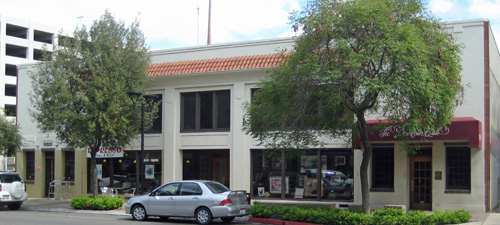Edward Glass (1886-1954)
Edward Glass was born in San Francisco in 1886, and moved with his family to Fresno as a young child. After graduating from Fresno High School he attended the University of California, and then studied architecture at the University of Pennsylvania under Paul Cret, the greatly influential Beaux Arts instructor.
After taking his Certificate of Proficiency in Architecture at the University of Pennsylvania in 1912, Glass remained on the East Coast while completing his apprenticeship training. As an apprentice, Glass worked in the Philadelphia offices of Heacock and Hokinson, and later for the firm of Mills and Bonkirk.
 Upon
returning to his home on the West Coast, Edward Glass opened a practice in
Fresno, and was soon joined by Charles Butner in 1914.
The young firm aggressively pursued a variety of residential and commercial
projects, including many school commissions. One of their most significant
Fresno projects was the Fresno Republican
Printery Building (1919, on right). During the boom period that followed
World War I, Glass and Butner enjoyed a solid position in California's
architectural community. In October of 1919, Edward Glass was appointed to the
California State Board of Architecture by Governor Stevens, and later that same
year the firm of Glass and Butner was honored in competition for its design
proposal for a Veterans' Memorial Building in San Francisco. Clouded in
apparent controversy, the proposed structure was never built, and after
completing several small projects for William Randolph Hearst, Glass and Butner
redirected their energies to projects in the central San Joaquin Valley.
Upon
returning to his home on the West Coast, Edward Glass opened a practice in
Fresno, and was soon joined by Charles Butner in 1914.
The young firm aggressively pursued a variety of residential and commercial
projects, including many school commissions. One of their most significant
Fresno projects was the Fresno Republican
Printery Building (1919, on right). During the boom period that followed
World War I, Glass and Butner enjoyed a solid position in California's
architectural community. In October of 1919, Edward Glass was appointed to the
California State Board of Architecture by Governor Stevens, and later that same
year the firm of Glass and Butner was honored in competition for its design
proposal for a Veterans' Memorial Building in San Francisco. Clouded in
apparent controversy, the proposed structure was never built, and after
completing several small projects for William Randolph Hearst, Glass and Butner
redirected their energies to projects in the central San Joaquin Valley.
In about 1939 Glass moved to San Francisco, where he was employed as an architect for the U.S. Navy. He died in San Francisco on 31 January 1954.
Biography adapted from National Register of Historic
Places nomination for the Fresno Republican Building, originally prepared by
John Edward Powell.